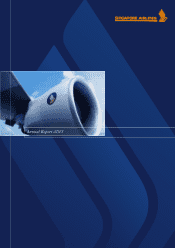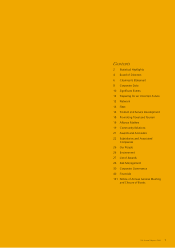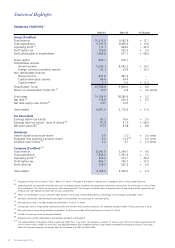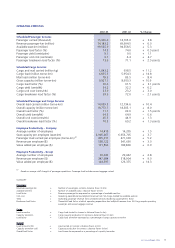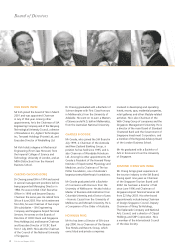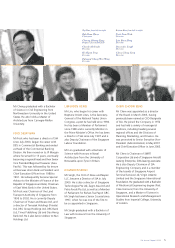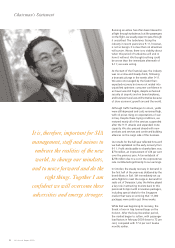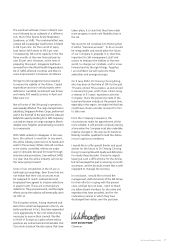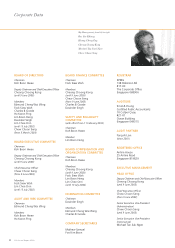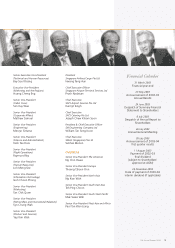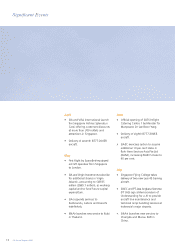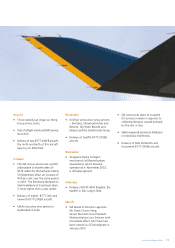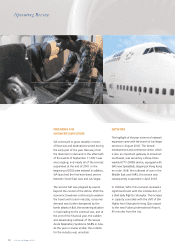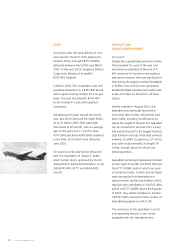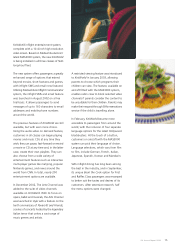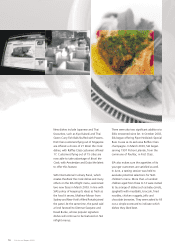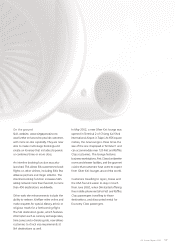Singapore Airlines 2003 Annual Report Download - page 9
Download and view the complete annual report
Please find page 9 of the 2003 Singapore Airlines annual report below. You can navigate through the pages in the report by either clicking on the pages listed below, or by using the keyword search tool below to find specific information within the annual report.
taken place, it is clear that they have made
more progress in work-rule flexibility than in
the US.
We must not lull ourselves into thinking that
it will be "business as usual". To do so would
be irresponsible and would place the future
of our Company in jeopardy. It is, therefore,
important for SIA management, staff and
unions to embrace the realities of the new
world, to change our mindsets, and to move
forward and do the right things. Together,
I am confident we will overcome these
adversities and emerge stronger.
On 9 June 2003, Dr Cheong Choong Kong,
who has been at the helm of SIA for the past
19 years, retired. His successor, as announced
in January this year, is Mr Chew Choon Seng,
a veteran of 31 years’ experience with the
Company. Given the precarious state of the
travel and tourism industry at the present time,
especially in this region, he might feel that fate
could have chosen a kinder moment for him
to take over.
From the Company’s viewpoint, the
circumstances make his appointment all the
more suitable. It will provide continuity during
a time when the Company must also undertake
massive changes in the way we do business.
Nobody is better qualified to lead the Airline
in such capricious conditions.
I would like to offer special thanks and good
wishes for the future to Dr Cheong Choong
Kong, for serving SIA with loyalty and distinction
for nearly three decades. I know he regrets
leaving at such a difficult time for the Airline,
but he has played his part in ensuring a smooth
succession, and he has built a team that is well
equipped to manage the recovery.
In conclusion, I would like to thank the
management, staff and unions of the SIA Group
for their efforts in coping with the present
crisis; and last but not least, I wish to thank
my fellow Board members for the value and
expertise they have provided, and for the
meticulous manner in which they have
discharged their duties over the past year.
KOH BOON HWEE
Chairman
7
SIA Annual Report 02/03
The eventual outbreak of war in March was
soon followed by an outbreak of a different
sort, that of the Severe Acute Respiratory
Syndrome, or SARS. The combined effect was
a steep fall in passenger load factors in March
to 65.9 per cent. For the month of April,
load factors fell further to 49.2 per cent.
Consequently, SIA cut its capacity in the first
three months of the new financial year by
over 30 per cent. However, at the time of
preparing this report, Singapore had been
removed from the World Health Organization’s
list of SARS-affected countries and there is
some improvement in business confidence.
Stringent cost management was essential
to ensure the viability of the Airline. Capital
expenditure and non-critical projects were
deferred or cancelled; recruitment was frozen;
and nearly 300 weekly services in April and
May were cut.
Not all facets of the SIA group’s operations
were equally affected. The cargo transportation
subsidiary, Singapore Airlines Cargo, performed
well in the first half of the year, but the reduced
bellyhold capacity resulting from SIA’s frequency
cuts had an impact on cargo carriage in March,
despite more freighter services being mounted
to compensate.
With SARS unlikely to disappear in the near
term, the outlook is uncertain. In any event,
the airline industry cannot sit on its hands and
wait for the recovery. While costs will continue
to be strictly controlled, efforts are under
way to stimulate demand for travel through
incentives and promotions. Even without SARS,
it is clear that the airline industry will not be
the same going forward.
Some of our competitors in the US are in
bankruptcy proceedings. Even those that are
not realize that their cost structures must
be realigned to match reduced demand.
Employees have agreed to massive reductions
in payroll costs. These are not temporary
reductions. They are permanent, and the ripple
effects across the industry will eventually catch
up with us.
The European airlines, having observed and
learnt from what has happened in the US, are
better positioned. In fact, they have responded
more aggressively to the cost restructuring
necessary to ensure their survival. We like
to think of Europe as a place where labour
practices are entrenched and intractable. But
if you look closely at the discussions that have

